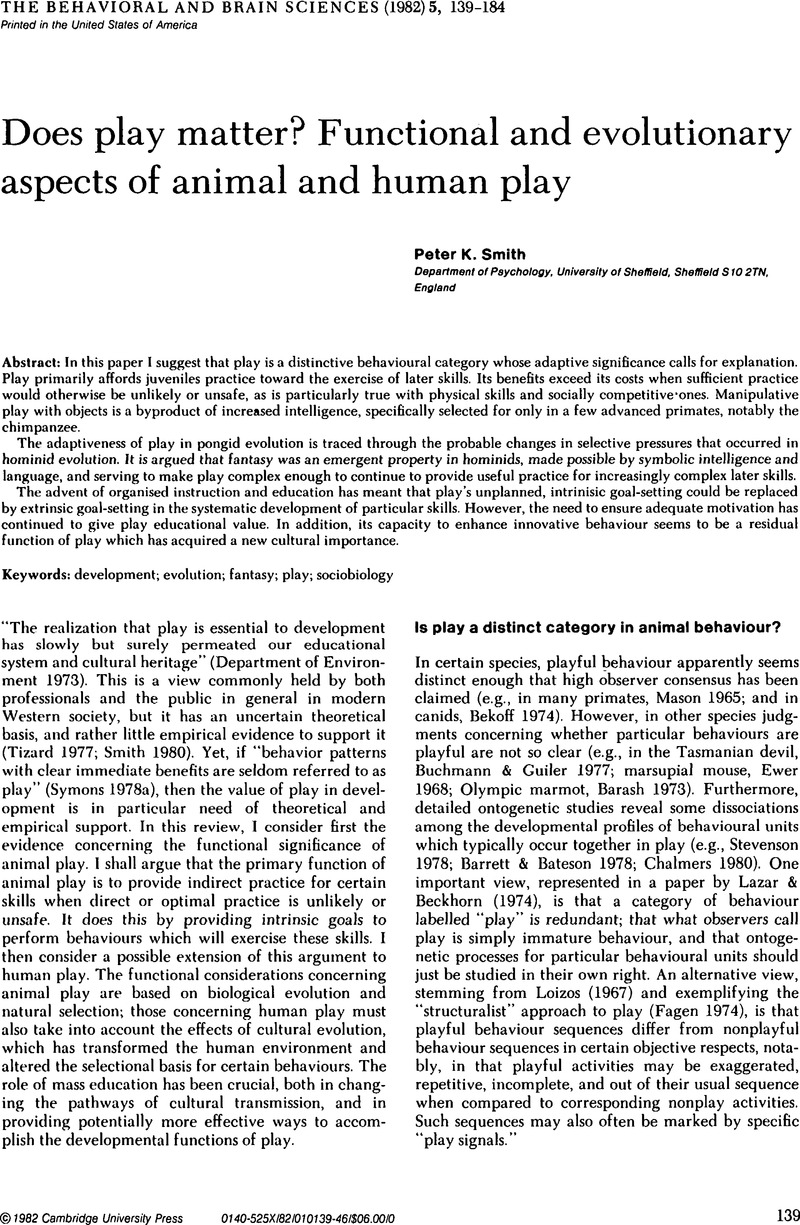Crossref Citations
This article has been cited by the following publications. This list is generated based on data provided by Crossref.
Thor, D.H.
and
Holloway, W.R.
1984.
Social play in juvenile rats: A decade of methodological and experimental research.
Neuroscience & Biobehavioral Reviews,
Vol. 8,
Issue. 4,
p.
455.
Wood, Robin D.
Bannoura, Michelle D.
and
Johanson, Ingrid B.
1994.
Prenatal cocaine exposure: Effects on play behavior in the juvenile rat.
Neurotoxicology and Teratology,
Vol. 16,
Issue. 2,
p.
139.
MAGALHÃES, ANA
SUMMAVIELLE, TERESA
MELO, PEDRO
ROSA, RUI
TAVARES, MARIA AMÉLIA
and
DE SOUSA, LILIANA
2006.
Prenatal Exposure to Cocaine and Enriched Environment.
Annals of the New York Academy of Sciences,
Vol. 1074,
Issue. 1,
p.
620.
Magalhães, Ana
Summavielle, Teresa
Tavares, Maria Amélia
and
de Sousa, Liliana
2007.
Postnatal exposure to cocaine in rats housed in an enriched environment: effects on social interactions.
Human & Experimental Toxicology,
Vol. 26,
Issue. 4,
p.
303.
Thornton, Alex
2008.
Early body condition, time budgets and the acquisition of foraging skills in meerkats.
Animal Behaviour,
Vol. 75,
Issue. 3,
p.
951.
Thornton, Alex
and
Boogert, Neeltje J.
2019.
Genes and Behaviour.
p.
181.
Kaplan, Gisela
2020.
Play behaviour, not tool using, relates to brain mass in a sample of birds.
Scientific Reports,
Vol. 10,
Issue. 1,
Kaplan, Gisela
2024.
The evolution of social play in songbirds, parrots and cockatoos - emotional or highly complex cognitive behaviour or both?.
Neuroscience & Biobehavioral Reviews,
Vol. 161,
Issue. ,
p.
105621.



